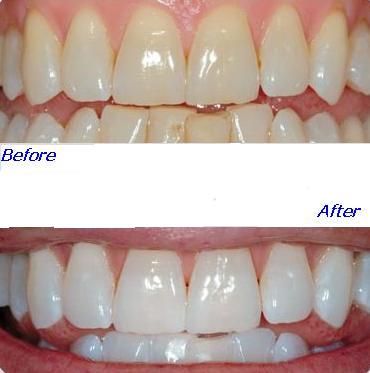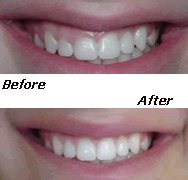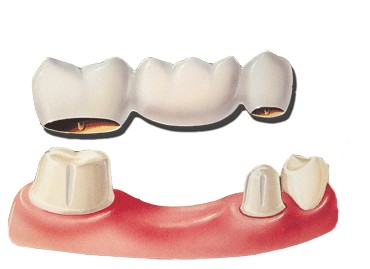 Advanced Dental Care
3407 Wilkens Avenue
Advanced Dental Care
3407 Wilkens Avenue Suite 205
Baltimore, MD 21229
(410) 525-0555 of Baltimore, Maryland
Home
General Dentistry
Cosmetic Dentistry
Restorative Dentistry
Relaxation Dentistry
Schedule an appointment
 COSMETIC
COSMETICDENTISTRY
Cosmetic Dentistry
It is said that a warm smile is the universal language of kindness. At Advanced Dental Care of Baltimore, your smile is our top priority. If you find that you are unhappy with the color, shape, size or look of your teeth, there are many treatment options available to you.
Here are some of the services available to you:
Tooth Whitening, White Fillings, Crown Lengthening, Laser Assisted Gingivectomy, Laser Assisted Gingivoplasty, Bonding, Veneers, Crowns, Bridges, Invisalign.
Tooth Whitening Tooth whitening is the process which helps break up and remove tooth staining. The best ways to combat this staining and restore one’s smile is to get to the root of the problem. Causes of tooth staining include dark colored food and drinks, advancing age, inadequate home care, tobacco use, dental Fillings, some medications and dental trauma. After a professional cleaning, our take home kits or in-house tooth whitening work best for teeth that are stained due to dark colored food, drinks and tobacco.
Tooth whitening is the process which helps break up and remove tooth staining. The best ways to combat this staining and restore one’s smile is to get to the root of the problem. Causes of tooth staining include dark colored food and drinks, advancing age, inadequate home care, tobacco use, dental Fillings, some medications and dental trauma. After a professional cleaning, our take home kits or in-house tooth whitening work best for teeth that are stained due to dark colored food, drinks and tobacco.
White Fillings All of our fillings are 100% mercury free tooth-colored composite resin.
All of our fillings are 100% mercury free tooth-colored composite resin.
“White fillings” or Dental Composites are tooth-colored restorations used to restore decayed teeth. Composites are much more esthetic than traditional “silver” or Amalgam restorations which can lead to permanent discoloration or cracking of teeth. Composite restorations are bonded to teeth so they can help make teeth stronger after the removal of decay.
Crown Lengthening, Gingivectomy or Gingivoplasty In the case of a “gummy smile”, Crown Lengthening, Gingivectomy or Gingivoplasty can be good treatment options. Crown lengthening is the surgical procedure used to expose more tooth structure by the removal of bone, gum tissue or both. Gingivectomy is the surgical procedure used to remove excess gum tissue. Gingivoplasty is the surgical procedure used to reshape and contour healthy gum tissue around teeth.
In the case of a “gummy smile”, Crown Lengthening, Gingivectomy or Gingivoplasty can be good treatment options. Crown lengthening is the surgical procedure used to expose more tooth structure by the removal of bone, gum tissue or both. Gingivectomy is the surgical procedure used to remove excess gum tissue. Gingivoplasty is the surgical procedure used to reshape and contour healthy gum tissue around teeth.
Dental Bonding Dental Bonding is a great cosmetic dentistry service. It can be quick, relatively inexpensive and make a dramatic change to your smile in one office visit. Bonding is the process in which a tooth-colored composite material is applied to the tooth and hardened with a special light. Bonding can be used to improve the appearance of discolored, short or crooked teeth, repair cavities, chipped or cracked teeth, or to close spaces between teeth. Bonding tends to require very little removal of tooth structure so there is often no need for anesthesia.
Dental Bonding is a great cosmetic dentistry service. It can be quick, relatively inexpensive and make a dramatic change to your smile in one office visit. Bonding is the process in which a tooth-colored composite material is applied to the tooth and hardened with a special light. Bonding can be used to improve the appearance of discolored, short or crooked teeth, repair cavities, chipped or cracked teeth, or to close spaces between teeth. Bonding tends to require very little removal of tooth structure so there is often no need for anesthesia.
Dental Veneers Veneers can improve the appearance of discolored, short or crooked teeth, chipped or cracked teeth, or be used to close spaces between teeth. Veneers are very thin and translucent shells (of tooth-colored material) designed to cover the front surface of teeth. Veneers can be made from porcelain or dental composite materials. Porcelain veneers look the most like your natural teeth. They can mimic the light reflecting properties of natural teeth and resist stains better than composite veneers and traditional bonding. Veneers also tend to require very little removal of tooth structure so there is often no need for anesthesia. Veneers are often completed in 3 dental visits.
Veneers can improve the appearance of discolored, short or crooked teeth, chipped or cracked teeth, or be used to close spaces between teeth. Veneers are very thin and translucent shells (of tooth-colored material) designed to cover the front surface of teeth. Veneers can be made from porcelain or dental composite materials. Porcelain veneers look the most like your natural teeth. They can mimic the light reflecting properties of natural teeth and resist stains better than composite veneers and traditional bonding. Veneers also tend to require very little removal of tooth structure so there is often no need for anesthesia. Veneers are often completed in 3 dental visits.
Crowns A crown is dental material used to restore a tooth to its original form, or to its desired form, color or contour. A crown (often referred to as a cap) covers and helps protect the entire tooth. Crowns are often recommended in cases where the tooth structure is weak, severely worn down, severely discolored, misaligned, after a root canal procedure or to cover a dental implant. Crowns can be made from stainless steel, all metal (such as gold or another alloy), porcelain-fused-to-metal, resin, or ceramic materials. Crowns are often completed in two dental visits.
A crown is dental material used to restore a tooth to its original form, or to its desired form, color or contour. A crown (often referred to as a cap) covers and helps protect the entire tooth. Crowns are often recommended in cases where the tooth structure is weak, severely worn down, severely discolored, misaligned, after a root canal procedure or to cover a dental implant. Crowns can be made from stainless steel, all metal (such as gold or another alloy), porcelain-fused-to-metal, resin, or ceramic materials. Crowns are often completed in two dental visits.
Bridges If you are missing teeth, a dental bridge is a great choice to replace those teeth in a short period of time- often completed in two dental visits. A bridge consists of three or more crowns fused together to be permanently cemented unto the natural teeth (abutment teeth) which surround the missing teeth space. If there are no surrounding teeth to support the bridge, dental implants can be used to fix the bridge in place. A bridge can help maintain the shape of your face, prevent shifting of teeth and reduce stress in your bite caused by missing teeth.
If you are missing teeth, a dental bridge is a great choice to replace those teeth in a short period of time- often completed in two dental visits. A bridge consists of three or more crowns fused together to be permanently cemented unto the natural teeth (abutment teeth) which surround the missing teeth space. If there are no surrounding teeth to support the bridge, dental implants can be used to fix the bridge in place. A bridge can help maintain the shape of your face, prevent shifting of teeth and reduce stress in your bite caused by missing teeth.
Invisalign Invisalign uses a series of clear aligners trays specially created for you to gently and effectively move teeth when worn over a period of time. One of the advantages of Invisalign over traditional braces its ease of use (you can take it out to eat or drink), and esthetics (it is virtually invisible). There are no metal brackets to attach and no wires to tighten. You will be seen generally every 2-4 weeks for a brief checkup and new set of aligners until your treatment is complete. You can get your dream smile with little interference in your daily life. The best part about using Invisalign is that most people won't even know you are straightening your teeth.
Invisalign uses a series of clear aligners trays specially created for you to gently and effectively move teeth when worn over a period of time. One of the advantages of Invisalign over traditional braces its ease of use (you can take it out to eat or drink), and esthetics (it is virtually invisible). There are no metal brackets to attach and no wires to tighten. You will be seen generally every 2-4 weeks for a brief checkup and new set of aligners until your treatment is complete. You can get your dream smile with little interference in your daily life. The best part about using Invisalign is that most people won't even know you are straightening your teeth.
To see a video on how Invisalign works, click here.
Not sure which solution is right for you? We would be happy to schedule a free consultation to discuss your options.
Here are some of the services available to you:
Tooth Whitening, White Fillings, Crown Lengthening, Laser Assisted Gingivectomy, Laser Assisted Gingivoplasty, Bonding, Veneers, Crowns, Bridges, Invisalign.
Tooth Whitening
White Fillings
“White fillings” or Dental Composites are tooth-colored restorations used to restore decayed teeth. Composites are much more esthetic than traditional “silver” or Amalgam restorations which can lead to permanent discoloration or cracking of teeth. Composite restorations are bonded to teeth so they can help make teeth stronger after the removal of decay.
Crown Lengthening, Gingivectomy or Gingivoplasty
 In the case of a “gummy smile”, Crown Lengthening, Gingivectomy or Gingivoplasty can be good treatment options. Crown lengthening is the surgical procedure used to expose more tooth structure by the removal of bone, gum tissue or both. Gingivectomy is the surgical procedure used to remove excess gum tissue. Gingivoplasty is the surgical procedure used to reshape and contour healthy gum tissue around teeth.
In the case of a “gummy smile”, Crown Lengthening, Gingivectomy or Gingivoplasty can be good treatment options. Crown lengthening is the surgical procedure used to expose more tooth structure by the removal of bone, gum tissue or both. Gingivectomy is the surgical procedure used to remove excess gum tissue. Gingivoplasty is the surgical procedure used to reshape and contour healthy gum tissue around teeth.
Dental Bonding
 Dental Bonding is a great cosmetic dentistry service. It can be quick, relatively inexpensive and make a dramatic change to your smile in one office visit. Bonding is the process in which a tooth-colored composite material is applied to the tooth and hardened with a special light. Bonding can be used to improve the appearance of discolored, short or crooked teeth, repair cavities, chipped or cracked teeth, or to close spaces between teeth. Bonding tends to require very little removal of tooth structure so there is often no need for anesthesia.
Dental Bonding is a great cosmetic dentistry service. It can be quick, relatively inexpensive and make a dramatic change to your smile in one office visit. Bonding is the process in which a tooth-colored composite material is applied to the tooth and hardened with a special light. Bonding can be used to improve the appearance of discolored, short or crooked teeth, repair cavities, chipped or cracked teeth, or to close spaces between teeth. Bonding tends to require very little removal of tooth structure so there is often no need for anesthesia.
Dental Veneers
 Veneers can improve the appearance of discolored, short or crooked teeth, chipped or cracked teeth, or be used to close spaces between teeth. Veneers are very thin and translucent shells (of tooth-colored material) designed to cover the front surface of teeth. Veneers can be made from porcelain or dental composite materials. Porcelain veneers look the most like your natural teeth. They can mimic the light reflecting properties of natural teeth and resist stains better than composite veneers and traditional bonding. Veneers also tend to require very little removal of tooth structure so there is often no need for anesthesia. Veneers are often completed in 3 dental visits.
Veneers can improve the appearance of discolored, short or crooked teeth, chipped or cracked teeth, or be used to close spaces between teeth. Veneers are very thin and translucent shells (of tooth-colored material) designed to cover the front surface of teeth. Veneers can be made from porcelain or dental composite materials. Porcelain veneers look the most like your natural teeth. They can mimic the light reflecting properties of natural teeth and resist stains better than composite veneers and traditional bonding. Veneers also tend to require very little removal of tooth structure so there is often no need for anesthesia. Veneers are often completed in 3 dental visits.
Crowns
 A crown is dental material used to restore a tooth to its original form, or to its desired form, color or contour. A crown (often referred to as a cap) covers and helps protect the entire tooth. Crowns are often recommended in cases where the tooth structure is weak, severely worn down, severely discolored, misaligned, after a root canal procedure or to cover a dental implant. Crowns can be made from stainless steel, all metal (such as gold or another alloy), porcelain-fused-to-metal, resin, or ceramic materials. Crowns are often completed in two dental visits.
A crown is dental material used to restore a tooth to its original form, or to its desired form, color or contour. A crown (often referred to as a cap) covers and helps protect the entire tooth. Crowns are often recommended in cases where the tooth structure is weak, severely worn down, severely discolored, misaligned, after a root canal procedure or to cover a dental implant. Crowns can be made from stainless steel, all metal (such as gold or another alloy), porcelain-fused-to-metal, resin, or ceramic materials. Crowns are often completed in two dental visits.
Bridges
 If you are missing teeth, a dental bridge is a great choice to replace those teeth in a short period of time- often completed in two dental visits. A bridge consists of three or more crowns fused together to be permanently cemented unto the natural teeth (abutment teeth) which surround the missing teeth space. If there are no surrounding teeth to support the bridge, dental implants can be used to fix the bridge in place. A bridge can help maintain the shape of your face, prevent shifting of teeth and reduce stress in your bite caused by missing teeth.
If you are missing teeth, a dental bridge is a great choice to replace those teeth in a short period of time- often completed in two dental visits. A bridge consists of three or more crowns fused together to be permanently cemented unto the natural teeth (abutment teeth) which surround the missing teeth space. If there are no surrounding teeth to support the bridge, dental implants can be used to fix the bridge in place. A bridge can help maintain the shape of your face, prevent shifting of teeth and reduce stress in your bite caused by missing teeth.
Invisalign
 Invisalign uses a series of clear aligners trays specially created for you to gently and effectively move teeth when worn over a period of time. One of the advantages of Invisalign over traditional braces its ease of use (you can take it out to eat or drink), and esthetics (it is virtually invisible). There are no metal brackets to attach and no wires to tighten. You will be seen generally every 2-4 weeks for a brief checkup and new set of aligners until your treatment is complete. You can get your dream smile with little interference in your daily life. The best part about using Invisalign is that most people won't even know you are straightening your teeth.
Invisalign uses a series of clear aligners trays specially created for you to gently and effectively move teeth when worn over a period of time. One of the advantages of Invisalign over traditional braces its ease of use (you can take it out to eat or drink), and esthetics (it is virtually invisible). There are no metal brackets to attach and no wires to tighten. You will be seen generally every 2-4 weeks for a brief checkup and new set of aligners until your treatment is complete. You can get your dream smile with little interference in your daily life. The best part about using Invisalign is that most people won't even know you are straightening your teeth. To see a video on how Invisalign works, click here.
Not sure which solution is right for you? We would be happy to schedule a free consultation to discuss your options.